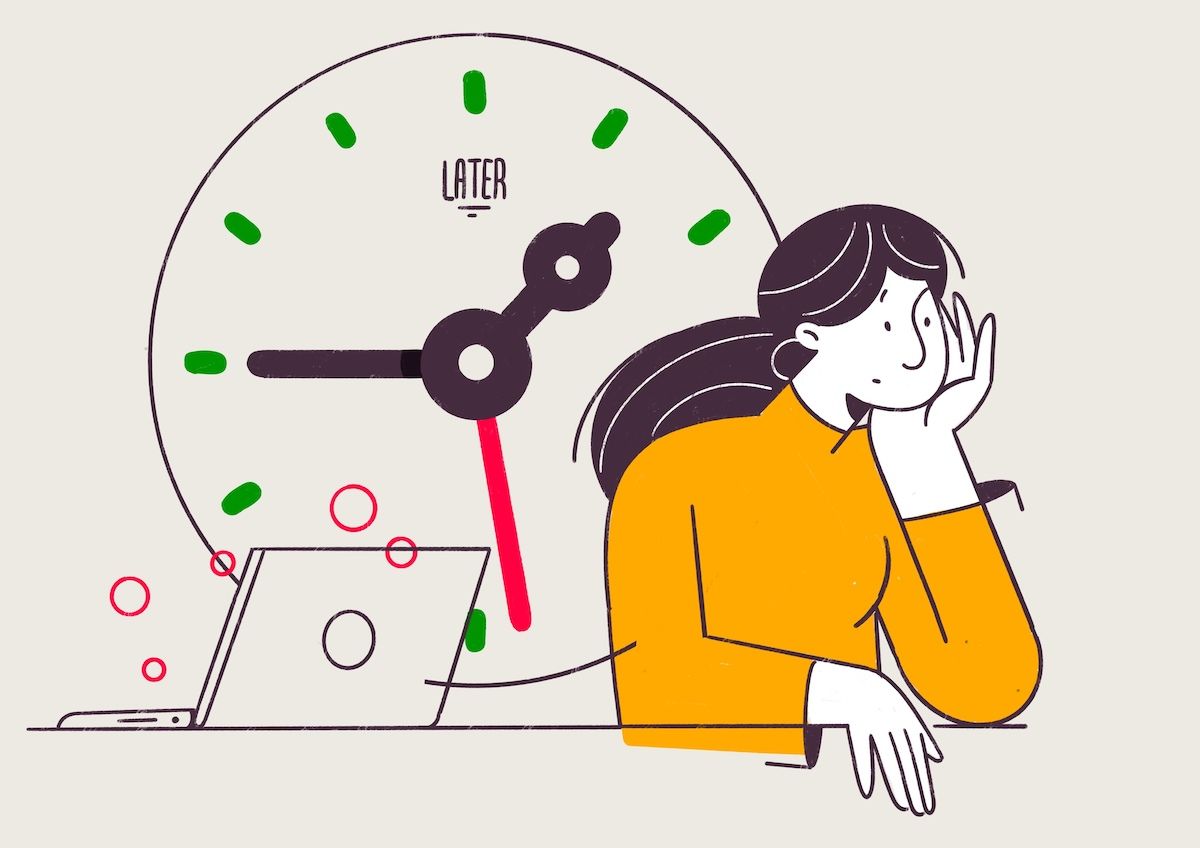Toxic Positivity
By Yash Vardhan Rajoria, BBA(FIA)’24
Positivity is welcomed with open arms but what if it pushes you down in the insecurity ground. There are many interpretations out there for the word “positive”, and it can be difficult to know which one fits the description best. One of the many tangents of interpretations is toxic positivity.
Toxic positivity is a term that has been spreading to the corners of society quickly and without much resistance, but what does it really mean? It would be easiest if we knew what toxic positivity means. Toxic positivity suggests that it is a moral obligation to stay positive and not express any negativity, regardless of the circumstances. Toxic positivity is all over social media, in memes—”Positive vibes only!” is a popular message, as is “It could be worse” and “Look on the bright side.” Though these expressions may seem harmless, the problem is that they offer just one way to feel. They insinuate that if you aren’t being upbeat and optimistic, then you’re doing something wrong. We define toxic positivity as the excessive and ineffective overgeneralization of a happy, optimistic state across all situations. The process of toxic positivity results in the denial, minimization, and invalidation of the authentic human emotional experience. Just like anything done in excess, when positivity is used to cover up or invalidate the human experience, it becomes toxic. By disallowing the existence of certain feelings, we fall into a state of denial and repressed emotions. The truth is, humans are flawed. We get jealous, angry, resentful, and greedy. Sometimes life can just flat out, suck. By pretending that we have “positive vibes all day,” we deny the validity of a genuine human experience.
Why is it harmful?
Shame
To force a positive outlook on pain is to encourage a person to be silent about their struggles. Most of us do not want to be seen as a drag or “bad,” so when the choice is between A) be brave and honest or B) pretend like everything is going great, we might be tempted to adopt the latter. Shame is crippling to the human spirit and one of the most uncomfortable feelings we can feel. Often, we don’t even know that we are feeling shame.
Suppressed Emotions
Expressing a broad range of emotions (even the “not-so-positive” ones), having words to describe how we feel, and facial expressions to emote (yup that can mean crying) help us regulate our stress response.
When we do not want to show a part of ourselves, we create a fake face or public persona for the world. That face can sometimes look cheery, with a happy smile, stating, “Everything happens for a reason, it is what it is.” When we go into hiding like that, we deny our truth. The real truth is, life can hurt sometimes. If you are angry—and the feelings of anger are not acknowledged—they get buried deep within our body. As described above, suppressed emotions can later manifest in anxiety, depression, or even physical illness.
It is important to acknowledge the reality of our emotions by verbalising them and releasing them from out of our bodies. This is what keeps us sane, healthy and relieves us of the tension caused by suppressing the truth. Once we honour our feelings, we embrace ALL of ourselves, the good, the bad and the ugly. And accepting ourselves just as we are is the path to a robust emotional life.
Isolation & Other Relational Problems
In denying our truth, we begin to live inauthentically with ourselves and with the world. We lose connection with ourselves, making it difficult for others to connect and relate to us. We might look unbreakable from the outside, but on the inside we are just scared little teddy bears longing for a hug.
Have you ever been around a sweet, sugary, “just think happy thoughts” pollyanna kind of person? How comfortable are you with spilling your guts about the deep emotions you’re feeling?
Even though that person might have the best intentions in the world, the message they are mindlessly sending is, “only good feelings are allowed in my presence.” Therefore, it makes it really difficult to express anything but “good vibes” around them. Consequently, you end up complying with the implied rules of, “I can only be a certain kind of person around you, I cannot be myself.”
The relationship with yourself is often reflected in the relationship you have with others. If you cannot be honest about your own feelings, how will you ever be able to hold space for someone else expressing real feelings in your presence? By curating a fake emotional world, we attract more fakeness resulting in counterfeit intimacy and superficial friendships.
Well, here are some internet suggested and personally applied ways to embrace the true meaning of positivity:
Practice mindfulness
Give mindfulness a try by simply taking a quiet moment to observe your feelings and emotions. Be mindful about not dwelling too much on just one thought or sensation, even the negative ones. Just acknowledge it, and gently move on.
It is important to notice our negative feelings and acknowledge the information they are giving us without losing ourselves in them.
Recognize that emotions are tools
“All emotions are functional and have a purpose. They are a signal to the person experiencing them or the person being communicated to”.
Negative emotions like anger or fear serve to alert us about potential danger or threat, whereas positive emotions like happiness foster connection and opportunities to be creative.
Admit your interpersonal mistakes
Whether in the moment or after, if you realise you dismissed a loved one’s negative emotions or cut them off with toxic positivity when they were trying to confide in you, own up to the mistake and apologise.
We all make mistakes, so try not to get down on yourself if you notice that something you said was insensitive or dismissive. The best thing you can do is recognize that and ask your loved one how you can better respond next time.
Clarify your needs
Sometimes, people may respond to our expression of emotion in a way that is not helpful, not because they do not want to help but because they make assumptions about how they should respond, such as offering advice when advice is not wanted.
One way to avoid this is to start the conversation by being clear about your needs — for example, when you are looking for empathy rather than advice, communicate that in the beginning only.
“Clarify your purpose by reinstating your intention for conversation”.
Let yourself feel your feelings
This is straightforward, though it is often harder to accomplish than it seems. We often have excuses for not engaging with our complicated emotions: We are too busy to deal with them, we do not want to be distressed, we do not want to upset others.
Remember, though, your negative feelings would not go away unless you eventually deal with them. So acknowledge them, try to understand where they might be coming from, and think about what you can do to address them.
It is important not to prioritise more positive emotions over negative ones. All emotions offer you useful information about how you are doing in the world, and all are equally valid.
“When you have the sweet, it’s a contrast to the sour, and you can really appreciate it”.
So how do you put this balance into practice? The best strategy for accepting the conflicting emotions we all feel is an old improv strategy called “Yes, and.” Here’s an example of how to address two divergent feelings: “I am afraid of what the future holds, and I feel some excitement at the hope some things may change for the better.”
When we give ourselves permission to hold multiple seemingly conflicting truths in our minds at the same time, we can eliminate the tension between them and give room to all of our emotions—both positive and negative.
If it is not you, but a friend or relative who may need support, use the same philosophy. It is healthier to acknowledge the pain a person might be experiencing. Ask what they need. It is possible to exude a positive attitude and still interact with others in a caring way. That is when positivity is not toxic.
Conclusion
Being a healthy human being involves being conscious of ourselves and how we show up in the world. If you recognize yourself as a transmitter of toxic positivity, it is time to cut it out. You are hurting yourself and the people you care about most by insisting on this monochromatic mindset. Instead of practising toxic positivity, aim for balance and the acceptance of both good and bad emotions rather than all-or-nothing thinking.
If you’re being influenced by toxic positivity, we encourage you to set healthy boundaries with anyone who passes judgement on your authentic experience and speaks your truth. We get one chance at this beautiful, painful, imperfect life…embrace it entirely and you will reap the rewards of bountiful aliveness.




Comments